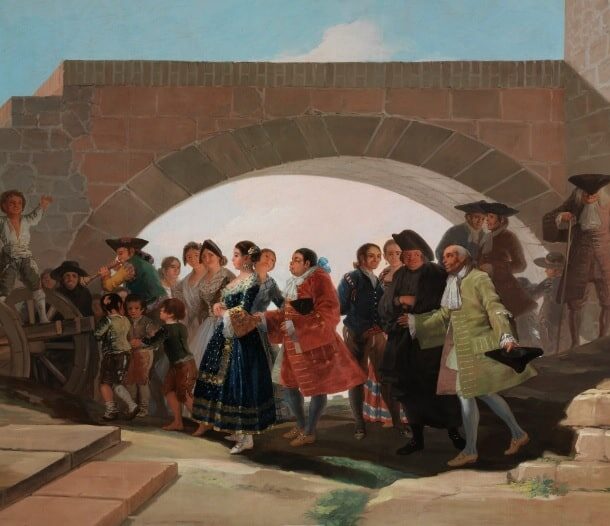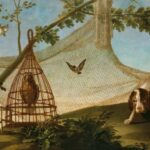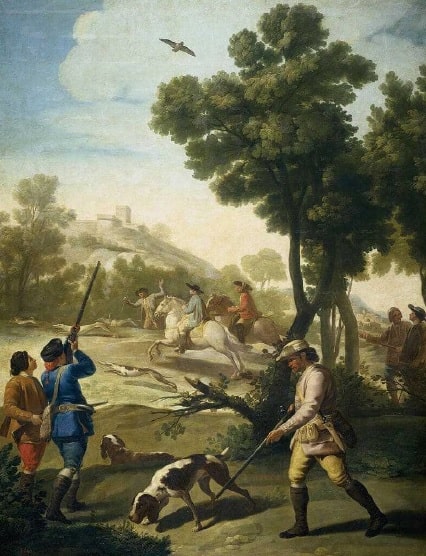
Depicted by Francisco de Goya at the end of the 18th century, the composition shows a hunting stand with two caged birds (an owl and a goldfinch). The scene is completed by a crouching dog and a net over the tree that frames the group. It was part of Goya’s first commission for the Royal Tapestry Factory of Santa Bárbara in 1774-75. The composition was the invention of Francisco Bayeu, who, according to surviving documents, was in keeping with the monarchs’ use of the Royal Site of El Escorial for hunting during the autumn. The resulting tapestry was intended to decorate the overdoor in the dining room of the Princes of Asturias (Charles IV and Maria Luisa of Parma).
Collection: Images
Project: 3. Rural world and urban world in the formation of the European identity., 4. Family, daily life and social inequality in Europe.
Chronology: XVIII
Scope: Secondary Education, Baccalaureate, University
Resource type: Image
Format: Oil on canvas (112 x 179 cm)
Source: Museo del Prado (Madrid)
Language: Spanish
Date: 1775
Owner: Álvaro Romero González (Modernalia)
Identifier: P002856
Copyright: Museo del Prado (Madrid)
Abstract: Representation of hunting techniques in the 18th century
Image
Tags








